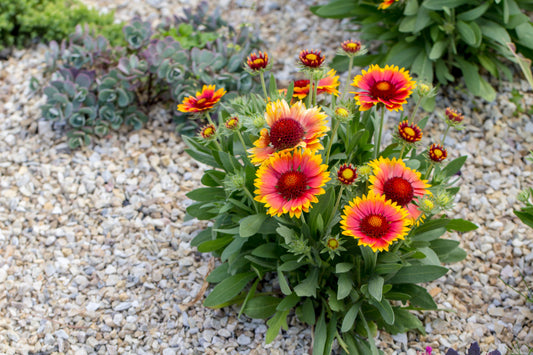Bee Balm (Monarda) Planting & Growing Guide
Planting Guide Information
-
Potted: At Soil LinePlanting Depth
-
Varies; 18" ApartPlanting Proximity
-
SpringPlanting Season
-
Monarda is loved by pollinators! The foliage smells good too.Plant Benefits
-
ModerateWater Quantity
-
SummerBloom Season
-
Full Sun to Partial ShadeSunlight Quantity
-
Zones 4-9Hardiness Zones
Additional Growing Information
Where to Plant
Plant your Bee Balm in a spot where it will receive plenty of sunlight and evenly moist soil rich in organic matter. While these plants will tolerate lighter soils and partial shade (particularly in hotter regions), they tend to become leggy with fewer flowers. Additionally, boggy conditions or arid soils are not tolerated over extended periods.
When to Plant
Bee Balm can be planted in the spring or fall, as both times yield outstanding results. However, it's wise to trim back the foliage to send energy down to the roots when planting in the fall. Clusters of tubular flowers will emerge from mid to late summer.
How to Plant
- Find a location with evenly moist, rich soil where your Bee Balm will receive plenty of sunlight.
- Remove the plant from its starter pot and shake off any loose soil from the root.
- Dig holes 18 to 24" apart and plant, ensuring the surrounding soil is level with the starter pot soil.
- Water thoroughly after planting to settle the soil around the plants.
How to Grow
- Water regularly to keep the soil evenly moist during active growth.
- Apply mulch around the plants to lock in moisture and control weed growth.
- Introduce an organic fertilizer if your plants do not appear to be thriving.
- Deadhead faded flowers throughout the growing season to encourage more blooms.
- Cut the stems back after the first frost in the fall.
Bee Balm Tips & Tricks
- Promote a new flush of blooms by deadheading or removing spent flowers during active growth.
- Expect butterflies, bees, and other happy pollinators to visit the flowers in droves.
- Feel free to snip the flower stems when in bloom for stunning bouquets, as doing so will not hurt the plants.
- Pair Bee Balm with other colorful plants that fancy the same conditions, such as Echinacea, Daylilies, or Phlox.
- Reduce watering if you notice powdery mildew on the foliage, which commonly occurs when the humidity is too high.
- Leave the last seed heads on the plants over the winter if you wish to give surrounding birds a snack.
- Divide your plants every 2 to 3 years in the spring to keep them healthy, as Bee Balm spreads rapidly, and this will help maintain its vigor.
- Provide stakes for taller varieties in areas with high winds.
From the Family
-
 Sold out
Sold outBee Balm - Pink Lace 2 Pack
2 Plants in Quart PotsRegular price $20.37Sale price $20.37 Regular priceUnit price per$33.95Sold out -
 Sold out
Sold outBee Balm - Balmy Tricolor 2 Pack
2 Plants in Quart PotsRegular price $20.37Sale price $20.37 Regular priceUnit price per$33.95Sold out





